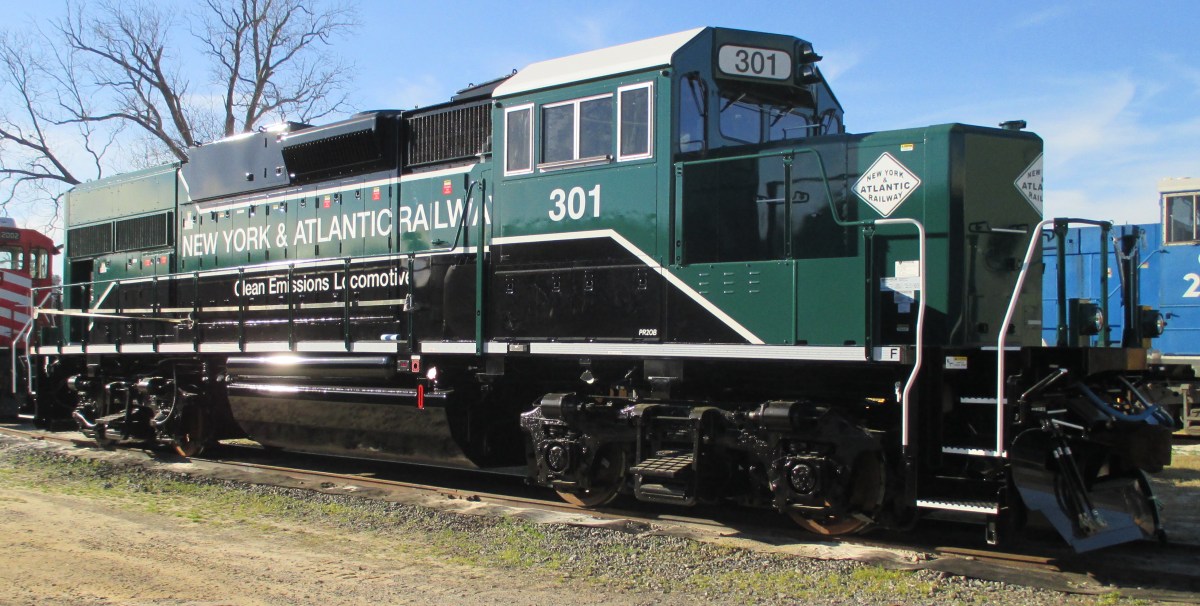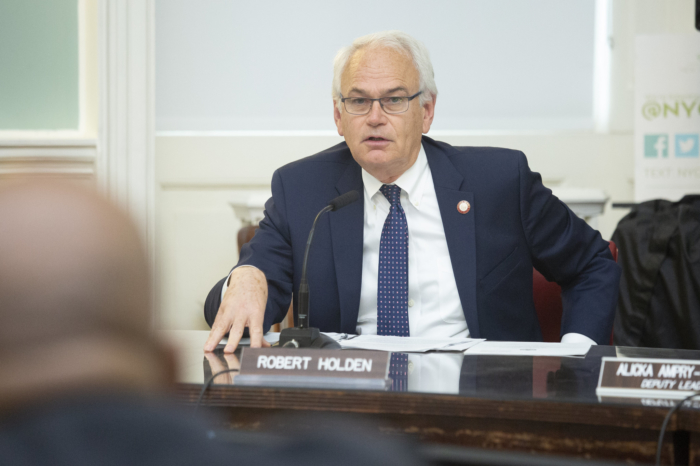For decades, the Fresh Pond Rail Yard in Glendale has been running locomotives with extremely outdated diesel engines that have been spewing dangerous pollutants into the air throughout Glendale, Middle Village, Maspeth and Ridgewood.
In order to reduce these harmful emissions, elected officials have secured funding over the last three years in the state budgets to retrofit four of the outdated diesel engines in New York and Atlantic Railway’s (NYA) fleet with top-of-the-line “green” engines.
Almost four years later, the new engines have yet to arrive at the Fresh Pond Yard, and are not the engines promised at the beginning of the process.
So what did your tax money actually buy?
This is what the Civics United for Railroad Environmental Solutions (CURES) organization wants to know from NYA, the operators of the trains at the Fresh Pond Rail Yard, who are responsible for procuring cleaner engines to be used in their operations.
When the first round of funding was made available, NYA was required to procure engines that meet Environmental Protection Agency (EPA) Tier 4 emission standards, some of the highest standards in the country since the EPA changed their emission standards in 2000.
But it has been revealed that the two engines already procured by NYA, which are said to be undergoing basic inspecting and testing in Georgia and the Carolinas, are not the Tier 4 engines that were required.
The engines are Tier 3-Plus engines, also known as Tier 3 with Tier 4 for particulate matter, which are a notch below the desired Tier 4 grade. The Tier 3-Plus engines meet Tier 4 standards for particulate matter emissions, but have Tier 3 standards for carbon monoxide and nitrogen oxide emissions.
“This Tier 3-Plus engine that they bought is only for some of the particulates,” said Mary Parisen, co-chair of CURES.
“This engine is going to be in service for 35 to 40 years,” added Mary Arnold, co-chair of CURES. “That is a lot more pollutants.”
According to NYA, at the time of the first Request for Proposal (RFP) of the new engines, there was no company offering a Tier 4 engine in the horsepower range that the railways needs for its operations.
“As of today, in the horsepower range we are looking at, a Tier 4 engine is not available,” said Paul Victor, president of NYA. “In the range of 2,000 horsepower, which is mid-range, there was not at that time, nor at this time, a Tier 4 engine available.”
Victor explained that at the time of the RFP in 2013, no manufacturer was willing to build a Tier 4 engine ahead of the required schedule, which was January 2015. NYA was then faced with a decision to wait an indeterminate period of time for the development of Tier 4 engines, or go with what engines were available, the Tier 3-Plus.
“The decision was made to go forward instead of waiting,” Victor said. “The contract went forward for two units after 2014.”
The community would do plenty of waiting for the new engines, though.
The first engine was supposed to arrive in November 2014, but by April 2015, when funds for a third engine upgrade were secured, neither of the first two engines had hit the rails at the Fresh Pond Yard. In fact, the two engines aren’t expected to make their debut this April.
Assemblyman Andrew Hevesi, who was instrumental in securing the funds for the engine upgrades, declined to comment on the current situation of the delayed engines and procurement process for the engines.
The arrival date of the engines was not the only question mark surrounding this process.
The procurement process for these new engines was a complicated procedure that has left CURES wondering what happened with the tax payer’s money and why a private company was handling public funds to procure these engines.
CURES feels the Long Island Rail Road (LIRR), which rents out all locomotives and the use of the rails at the Fresh Pond Yard to NYA, should have been involved in the procurement of the engines.
“Why was public money given to a private company to deal with?” Parisen asked. “Why was the LIRR not responsible for procurement?”
CURES believes that NYA did not purchase the highest-quality engines available at the time, even with Tier 4 engines not being readily available. If the community board was involved in the procurement process, Parisen claims, they would have advocated for the best engines that were available.
“We don’t want any more of the already out-of-date engines. The community should have always been involved and the first to be considered, and this money was not wisely spent,” Parisen said. “We stand firmly behind our thought of no more of the Tier 3 engines when newer and better technology is available.”
This has also spurred a response from elected officials, as state Senator Joseph Addabbo, Assemblyman Mike Miller and Assemblywoman Catherine Nolan have written letters to Governor Andrew Cuomo and the commissioner of the New York State Department of Transportation (NYSDOT) questioning why NYA was in charge of the procurement process.
In a meeting with Governor Cuomo, CURES, representatives of the LIRR, NYA and NYSDOT, along with Addabbo and Miller, it was made clear that NYA was not fully in charge of the procurement process.
“The governor’s office, through NYSDOT, had oversight over the procurement process,” Addabbo said.
The LIRR did not respond for comment as of press time.
The original RFP went out to bid to three companies, with Progress Rail — which was purchased by the Caterpillar company in 2006 — being awarded the bid to produce the four-axle PR20D 2000 horsepower engine.
“It is a complicated procurement process,” Victor said. “It wasn’t just about emissions. The engines needed to meet the emission criteria, plus the Long Island Rail Road’s requirements. The first RFP included the second engine. We went forward with contract that had both engines in it. Now there is an amendment pending that would add a third and fourth engine.”
With more engines set to come down the tracks, NYA is looking forward to continuing its “green” effort and bring in environmentally sound engines for their operations.
“If Tier 4 engines becomes available, we will update our RFP because we want to have the best equipment available, but it is a long process; you can’t expect this overnight,” Victor said. “The amendment is on hold for the third and fourth engines and our hope is this continues over time so we can bring in cleanest and greenest locomotives available.”
These new engines that NYA will be getting have much better emission standards since the ones currently being used in the Fresh Pond Rail Yard and throughout the neighborhoods of Glendale, Maspeth, Middle Village, Ridgewood and beyond meet the EPA emission standards from the 1970s, and still give off toxic emissions.
“The engines they are getting are light years ahead of what they currently have,” said Robert Wullschleger, NYA’s chief mechanical officer. “When these engines were built there were no pollution standards. These engines are within one or two weeks of arriving in being in full service. They will be utilized within the Fresh Pond Yard, within the city and beyond.”

































